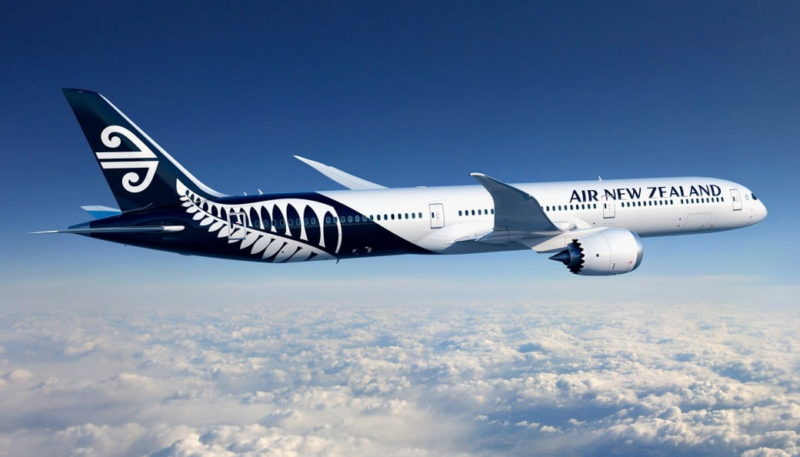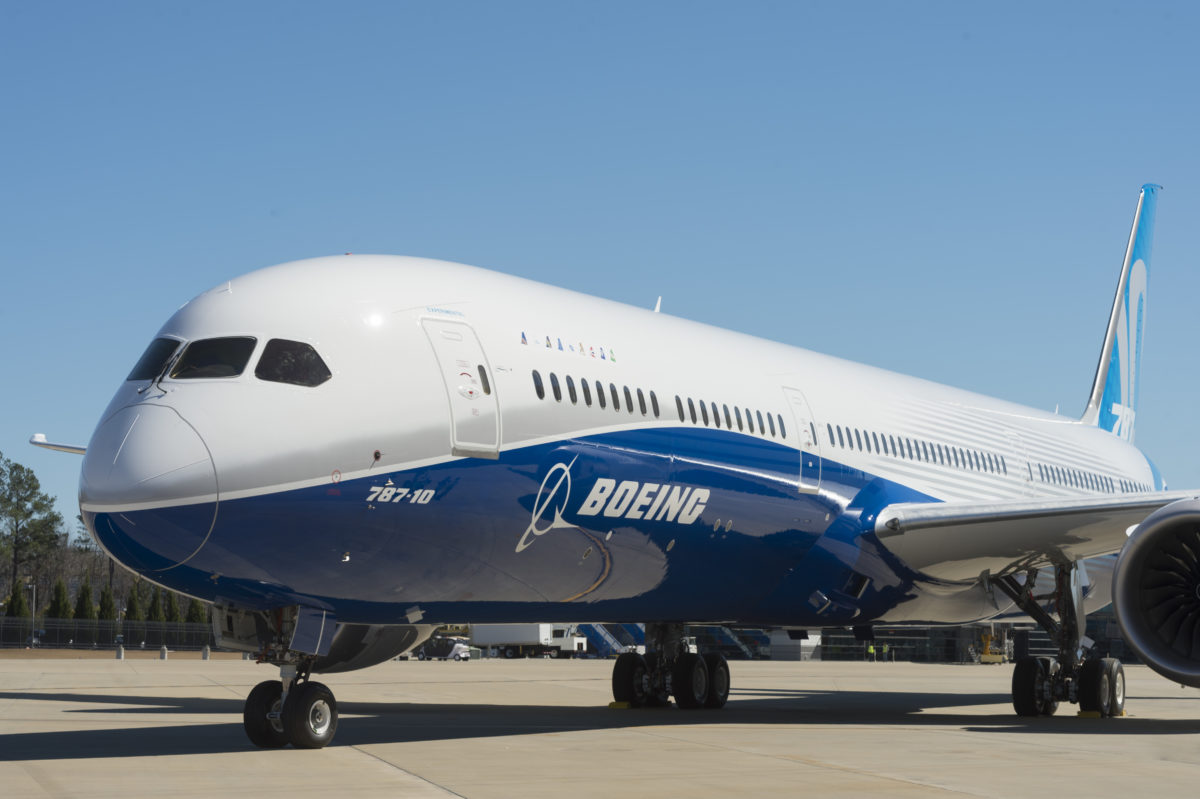Boeing has announced their third-quarter results, which include details of reducing 787 Dreamliner production.
Starting late 2020, Boeing will be reducing the production rate of 787 Dreamliners across two factories from 14 per month down to 12. This confirms concern about the company’s order and backlog drought for the type.
In the press release, Boeing cites the global trade environment, with this year seeing only $5 Billion in orders for their commercial division, including 20 787s for Korean Air, eight 787s for Air New Zealand and six 777 Freighters for China airlines.

Boeing’s current commercial airplane backlog currently consists of nearly 5,500 aircraft with a list price value of $387 Billion.
Escalating the situation was Russian carrier Aeroflot, cancelling their order for 22 787 Dreamliners, worth $5.5 Billion at list prices, which was placed in 2007.
An increase in trade disputes, an unpredictable economy and better performing narrow-body aircraft are to blame for the lack of orders, not only on the Boeing side but also across the pond at Airbus.
Boeing has allocated slots in their 777 and 787 production line in the hope that China will place a significant order, however it appears ongoing trade tension has hindered these plans.
777X Program Update
As well as discussing 787 Dreamliner performance, Boeing also provided an update on the current 777X situation.
Since facing delays as a result of General Electric GE9X engine design issues and an airframe ultimate load test failure, the 777X certification timeline has faced large amounts of questions from airlines and the media.
It has been confirmed that the 777X program is still progressing through pre-flight testing, despite the hiccups, and is on track for its first flight in early 2020.
Addressing concern over delivery dates, Boeing has said they are targeting 2021 for first delivery date.
For a reason yet to be known, an Emirates Boeing 777-9 has had its folding wing tips removed and has been moved into storage:
WH007 Emirates 777-9 A6-EZT LN1611 was moved from Stall 206 to 11/29 for storage today, note the wingtips have been removed. #B777 #B777X #B7779 #Emirates #Boeing #Everett #A6EZT #WH007 #Storage #Seattle #Dubai pic.twitter.com/YJnqI5WYuK
— Holden Riley (@PlanesAtPaine) October 23, 2019
737 MAX Program Update
As reported previously, Boeing has developed software and training updates for the 737 MAX and now has to wait for FAA and global approval to ready the aircraft for service.
Boeing is assuming that the 737 MAX will be granted regulatory approval during the fourth quarter of 2019; they have subsequently timed their increase in production rate from 42 to 57 per month by late 2020.
“Our top priority remains the safe return to service of the 737 MAX, and we’re making steady progress. We’ve also taken action to further sharpen our company’s focus on product and services safety, and we continue to deliver on customer commitments and capture new opportunities with our values of safety, quality and integrity always at the forefront.”
Boeing President and Chief Executive Officer Dennis Muilenburg
Third-Quarter Performance
Boeing has reported a third-quarter revenue of $20 Billion, GAAP earnings per share of $2.05 and core earnings per share (non-GAAP) of $1.45.
These results reflect the low 737 delivery figures, however are partially offset by higher defence and services volume.
Boeing’s third-quarter revenue for commercial aircraft was $8.2 Billion, compared to the $14 Billion recorded during the third quarter in 2018 – a significant drop mainly due to the 737 MAX crisis.
Operating margins for the third quarter decreased to 0.5 percent as a result of lower 737 deliveries, partially offset by a higher margin on the 787 Dreamliner program.
An operating cashflow of $2.4 Billion has been recorded; with $1.2 Billion of dividends paid, reflecting a 20 percent increase in dividends per share compared to the same period in 2018.
Cash investments in marketable securities totalled $10.9 Billion, compared to $9.6 Billion at the beginning of the quarter. Debt was $24.7 Billion, which is up from the $19.2 Billion at the beginning of the quarter. This is as a result of the issuance of new debt.
The total company backlog at quarter-end was $470 Billion and included net orders of $16 Billion.
Other company news includes the removal of Kevin McAllister as CEO of Boeing Commercial Airplanes, which you can read about here:




